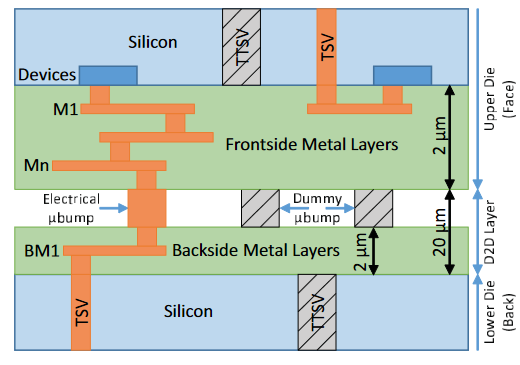Xylem: Enhancing Vertical Thermal Conduction in 3D Processor-Memory Stacks

In upcoming architectures that stack processor and DRAM dies, temperatures are higher because of the increased transistor density and the high inter-layer thermal resistance. However, past research has underestimated the extent of the thermal bottleneck. Recent experimental work shows that the Die-to-Die (D2D) layers hinder effective heat transfer, likely leading to the capping of core frequencies. To address this problem, in this paper, we first show how to create pillars of high thermal conduction from the processor die to the heat sink. We do this by aligning and shorting dummy D2D μbumps with thermal TSVs (TTSVs). This lowers processor temperatures substantially. We then improve application performance by boosting the processor frequency until we consume the available thermal headroom. Finally, these aligned and shorted dummy μbump-TTSV sites create die regions of higher vertical thermal conduction. Hence, we propose to leverage them with three new architectural techniques: conductivity-aware thread placement, frequency boosting, and thread migration. We evaluate our scheme, called Xylem, using simulations of an 8-core processor at 2.4 GHz and 8 DRAM dies on top. μBump-TTSV alignment and shorting in a generic and in a customized Xylem design enable an average increase in processor frequency of 400 MHz and 720 MHz, respectively, at an area overhead of 0.63% and 0.81%, and without exceeding acceptable temperatures. This improves average application performance by 11% and 18%, respectively. Moreover, applying Xylem’s conductivity-aware techniques enables further gains.
Publication Date
Published in
Research Area
External Links
Uploaded Files
Copyright
This material is posted here with permission of the IEEE. Internal or personal use of this material is permitted. However, permission to reprint/republish this material for advertising or promotional purposes or for creating new collective works for resale or redistribution must be obtained from the IEEE by writing to pubs-permissions@ieee.org.
